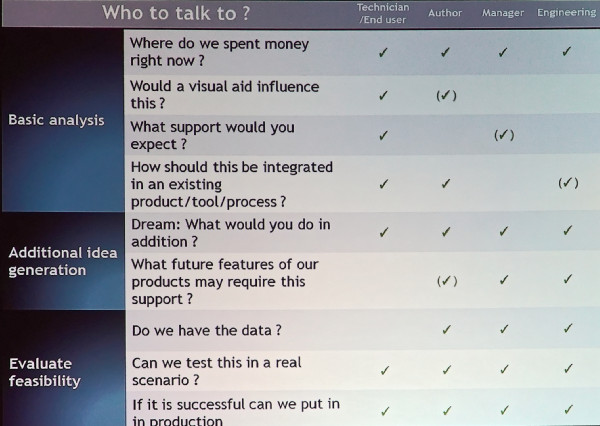Juergen Lumera of Bosch Automotive, where he is involved in technical documentation, started by saying its easier to get outsiders to introduce AR – insiders are not always trusted.
To get out of “sandboxes” and into real applications, the first thing to find out “where do you waste money at the moment”. In his experience, the first idea is not likely to be the best one.
Scientists and engineers are not the best source of use cases – a technician or end user is the best source of ideas which are more likely to deliver real benefits.
For which product do you have enough 3D data – is it good enough and accurate enough? Lumera said that he never saw a company that can match the information in the real world to the data stored in the system – changes happen in production without feedback into corporate data. That makes AR, based on the corporate data, a real challenge. There are also questions of whether you have access to the data you need for an AR application – is it under your control or from a supplier?
It pays to pick the right job if you really want to deliver a benefit. He showed a video of a BMW “sandbox” project of a vehicle technician using the glasses – but he said that no technician uses glasses to change a radiator, as in the video. On the other hand, getting access to the data on a wiring loom is really useful, but only if you can support all variations, regions etc.
Lumera presented a good table of items of interest and actions and he went through them. Technical documentation costs and savings are often a good driver for actions. Once again, he pointed out that end users and technicians always provide the most good ideas – they usually have problems that you know nothing about.


